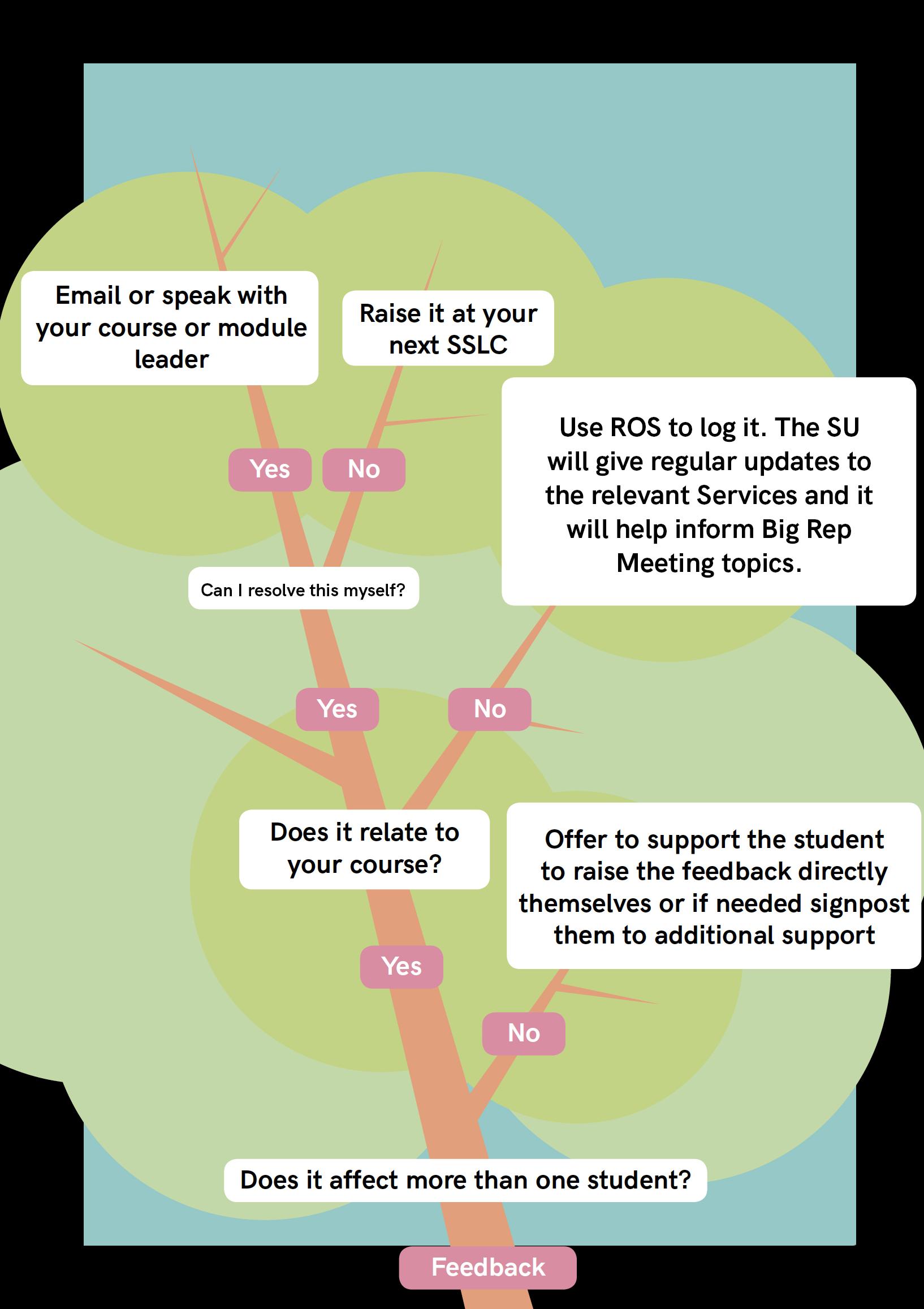
2 minute read
What Feedback Should Look Like
Once you’ve got lots of feedback from your students, it’s time to ensure you can deliver it in such a way that it is effective in creating change. The easiest way to check, is to apply to ABCDE of feedback: Is it:
Accurate & Appropriate – is there enough detail in the feedback to clearly explain what the issue / good practice is, and what the impact on students is? Use the decision tree to make sure you’re raising it in the right forum and in a timely manner.
Advertisement
Balanced – is it inclusive of everyone’s view. Have you made sure to check with minority groups of students*?
Constructive – is it worded in a way that clearly highlights any problem but in a moderate and practical way? Try offering solutions where possible using phrases such as “wouldn’t it be better if…”, or “could we consider… “. Apply the Rat Sandwich approach.
What Feedback Should Look Like
The Rat Sandwich approach can help you think about how you present critical feedback. Imagine the rat is your feedback, rather than just presenting staff with an unappetising smelly rat, think about sandwiching it between some delicious context and a proposed solution. For example, rather than: “No-one likes switching their cameras on for seminars” try “We haven’t spent much time getting to know each other yet, so the majority of students I asked said they found it a bit intimidating to have their camera on during the seminars. Could we do some activities to help us get to know each other in smaller groups?” A much tastier sandwich for your tutor to digest!

De-personalised – names are massive NO-NO! If there is an issue with a member of staff, SSLC meetings are NOT the forum to raise it. A confidential meeting with your Subject Chair or Director of Education in the first place is the right way to start. If you want to praise a member of staff, we recommend nominating them for a You’re Brilliant Award - look out for the boxes around campus or use the online form.

Evidenced – You should always evidence the feedback you have received whether by using comments, data, statistics, reports, University policy or practice from elsewhere.
A good tip is to think of the feedback you get on your academic work. What kind of feedback is useful for you to improve your work and keep you motivated? Is that the kind of feedback you’re giving your staff?
See “Being Inclusive” on page 31!






